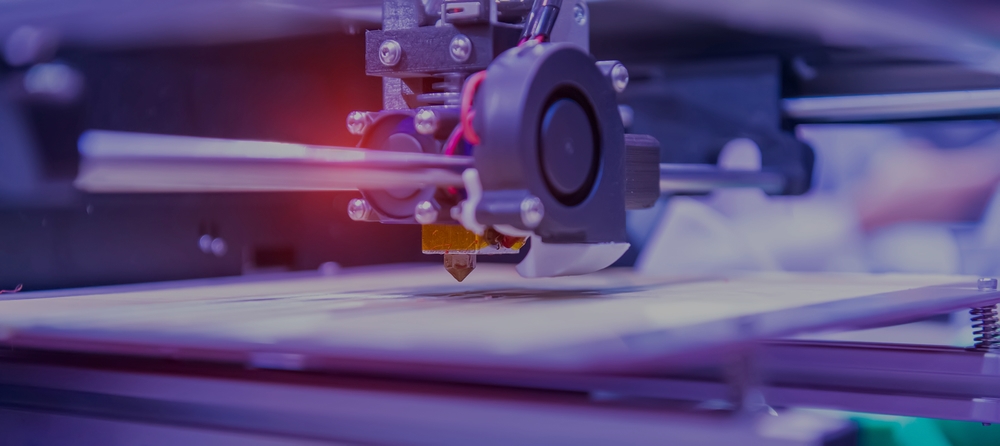

Originally published on fastradius.com on May 6, 2021
In an age that demands not only greater customization but also faster turnaround times and reduced waste, on-demand manufacturing is an increasingly popular means of producing products in the precise quantities needed — and immediately when they’re needed.
Unlike traditional manufacturing, which generally isn’t cost-effective unless a minimum volume of units is met, on-demand manufacturing accelerates time-to-market, guarantees that cost-per-part is kept low, and enables product development teams to be more agile in responding to market conditions. Further, on-demand manufacturing minimizes warehouse stockpiling and waste, improves energy efficiency, and improves risk management. For these reasons and others, on-demand manufacturing is the preferred method for creating prototypes, custom parts, or small orders.
On-demand manufacturing serves the needs of a wide range of customers for whom traditional manufacturing isn’t an ideal option. This may include customers who require bridge tooling while they ramp up to high-volume production, who have encountered supply chain disruptions, or who have variable or unpredictable demand for new or existing products. On-demand manufacturing also makes manufacturing more economical for customers to enter markets with low-volume, niche or customized products.
While the on-demand manufacturing model is comparatively fast and convenient, it is not without pitfalls. The most notable is the high cost of equipment, materials and software. Each of these components will increase the cost. In addition, on-demand manufacturing requires specific skills and great expertise, making it challenging for traditional manufacturers to adapt to the demands of on-demand clientele.


Finally, there’s the issue of quality: many transactional on-demand manufacturers will prioritize speed over quality. For this reason, you should always do your due diligence when shopping for an on-demand manufacturing partner to make sure they’re prepared to meet whatever specifications your team has.
However, many of these challenges are being addressed as on-demand manufacturing rises in popularity. And of course, these caveats do not detract from the undeniable benefits of the on-demand model: a faster manufacturing process, greater design freedom and flexibility, minimal leftover inventory, reduced waste, increased customizability, and lower costs.
While a broad range of manufacturing techniques can be leveraged in an on-demand operating model to facilitate fast, customized part production, these are among the most efficient and effective:
Industrial grade 3D printing, also referred to as additive manufacturing, is by far the most commonly-used on-demand manufacturing method, and for good reason. Offering short lead times, low costs after initial startup, and an unparalleled level of customization, it’s a great option for on-demand manufacturing.
That said, it’s not without its limitations. Some of the most considerable are the limited compatible materials, reduced material properties, and high material costs associated with additive manufacturing. What’s more, many 3D printing shops do not provide design services, which means teams looking to create a part via on-demand 3D printing will need to create their own design or seek out design services elsewhere.
Some manufacturers, like SyBridge Technologies, are paving the way with end-to-end design services offered alongside prototyping and on-demand parts production. In any case, 3D printing is still considered a go-to option for on-demand manufacturing, particularly for products or prototypes that can be made out of plastic.
CNC machining is a subtractive manufacturing method that uses rotating computer-controlled cutting tools to remove material from a solid block of material, shaping the part. Digital design files direct the machine’s cutting pattern, and because multiple machines can use the same design files at one time, CNC machining can greatly increase production speed.
What’s more, because CNC machining doesn’t require the creation of molds, it has relatively low production lead times compared to other manufacturing methods. In addition, because it’s highly automated, CNC machines can continue production even outside of normal work hours.
Urethane casting is similar to injection molding in that it relies on a mold to create numerous identical parts. However, unlike injection molding, urethane casts are made out of silicone and are used to create rubber- or plastic-like parts. Urethane casting is fast, generally inexpensive, and produces high-quality parts.
However, urethane casts generally are not recommended for production runs of more than 25 parts. For this reason, it’s considered an alternative to injection molding when production volume doesn’t justify the cost of creating an injection mold. It’s generally used for testing product design or for exceptionally low-volume production runs.
While these three methods are considered the fastest and most effective for on-demand manufacturing, they’re far from the only available methods. Other manufacturing methods, like sheet metal forming, polymer processing, and injection molding can all be used for on-demand manufacturing, as well, though to varying degrees of cost-effectiveness and speed.
Injection molding tends to be a less popular solution for on-demand manufacturing because it requires creation of a mold before the manufacturing process can begin in earnest, which can be a time-consuming and expensive process, particularly for low-volume production runs.
That said, there are situations in which it’s more appropriate to use a less common on-demand manufacturing method. For example, though injection molding tends to require longer lead times than 3D printing, CNC machining, or urethane casting, once the mold is made, it’s incredibly quick, easy, and cost-effective to make parts. It’s especially suitable for product runs that are expected to exceed 2,000 identical parts.
Ultimately, choosing the fastest on-demand manufacturing method may not be the only criteria you wish to consider and you’ll quite rightly want the one that best meets the needs of a given project — and determining which manufacturing method is right for your project often requires the help of an experienced partner like SyBridge Technologies.
SyBridge is a full-service manufacturing partner. Not only can our team of experienced designers and engineers help optimize a design and bring a product to life — our team can also help select the manufacturing method that’s truly the best fit for a given project.
What’s more, SyBridge offers flexible technology infrastructure that includes proprietary software that enables us to engage in IoT-driven digital manufacturing, endowing us with unparalleled agility and adaptability. We’re a one-stop shop for all of your on-demand manufacturing needs.
As the popularity of on-demand manufacturing grows, it becomes increasingly important that product teams select not just a service bureau, but a true partner like SyBridge Technologies, who can accelerate speed-to-market and help deliver high quality products to end-users. Get in touch with us today to learn more.
Forget typical cycle times. We're pushing the boundaries of conformal cooling. While traditional approaches deliver…
Forget typical cycle times. We're pushing the boundaries of conformal cooling. While traditional approaches deliver…
From left to right: Brayden Janak (apprentice); Logan Vifaquain (CNC machining, Programming and CMM); Ron…
SyBridge Technologies is proud to announce we have been awarded the 2023 General Motors Supplier…
Today, designers and engineers are accustomed to working with digital tools in their day-to-day jobs.…
Optimizing Your Injection Molding Process for Cost-Effective Manufacturing Excellence In today’s competitive landscape, manufacturers are…